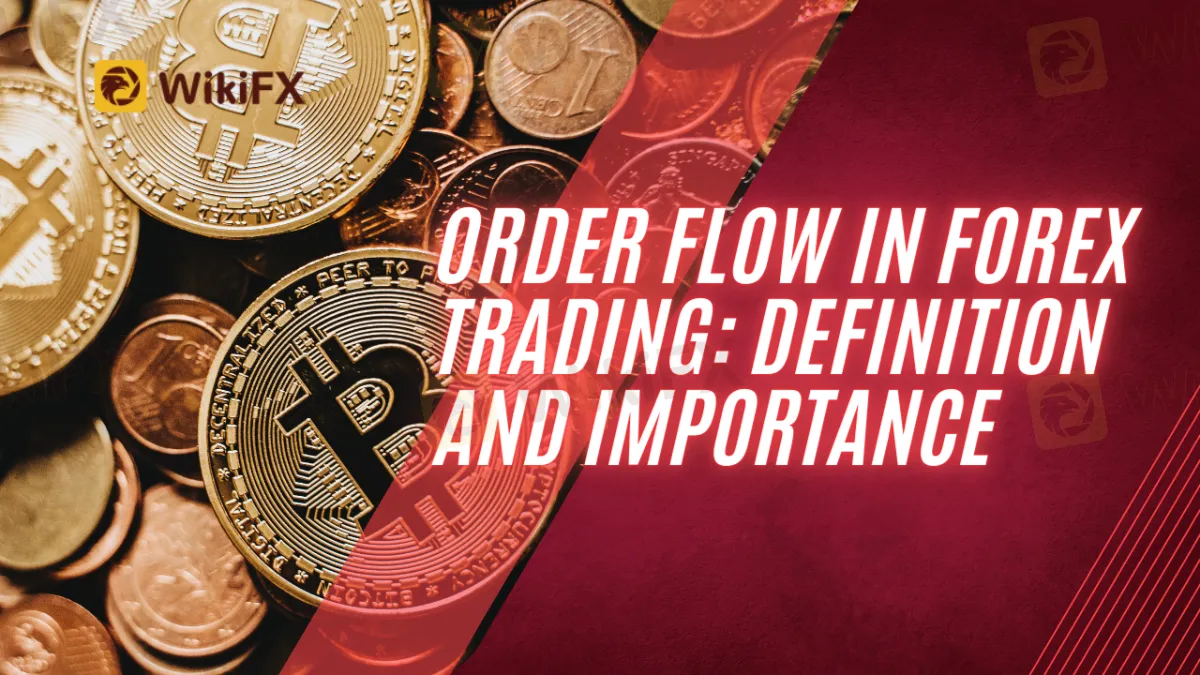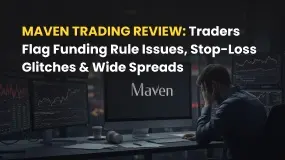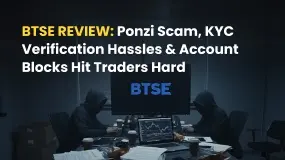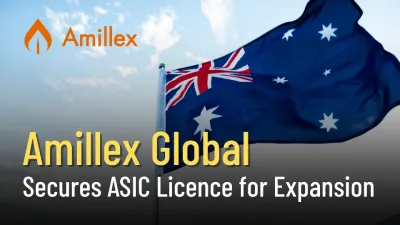简体中文
繁體中文
English
Pусский
日本語
ภาษาไทย
Tiếng Việt
Bahasa Indonesia
Español
हिन्दी
Filippiiniläinen
Français
Deutsch
Português
Türkçe
한국어
العربية
Order Flow in Forex Trading: Definition and Importance
Abstract:Traders may better predict price fluctuations by studying order flow. They can also make better trading judgments.

Before you can be good at forex trading, you need to understand the concept of order flow. Understanding how buyers and sellers interact to cause price movement is required. Traders may better predict price fluctuations and make more educated trading choices by studying order flow.
With a daily trading turnover of $6.6 trillion, the spot foreign exchange market is the biggest traded financial market in the world. When you place an order on an online trading platform, it is processed electronically. Then, verbal negotiations (called “inter-dealer brokerage”) can be used to finish some large trade orders.
For example, if a Citibank trader wishes to sell 200 million euros, the trader must break the order into many units, get quotations from market makers such as JP Morgan, UBS, or Goldman Sachs, negotiate the best price, and then fulfil the orders one by one.
As you can see, big orders are often executed by interbank market institutions.
Some brokers who act as middlemen for individual traders also buy or sell orders as part of the order execution process. PCS, Goldman Sachs, CMC Markets, and IG are examples of big forex brokers that can get the greatest liquidity rates from banks.
Brokers primarily serve individual traders, and they also maintain track of order flow. Order flow is made when buyers and sellers on the forex market put in their planned orders. Because it represents the potential momentum of a currency pair's movement, order flow may be beneficial to market makers or other kinds of brokers.
Most of the order flow in foreign exchange trading comes from the interbank market, which makes up more than half of the daily order flow in foreign exchange trading around the world. Since the interbank market is where most of the foreign exchange market's liquidity comes from, it is important to look into how these institutional players use order flow information to make trading decisions.
What Exactly Is Order Flow?
Financial institutions like banks have a lot of customers all over the world who may need to trade foreign currency. As a result, these financial institutions are extremely active in markets like interest rates and commodities, and they may function as intermediaries, brokering orders between buyers and sellers and producing order flow.
The key to order flow trading is determining the “market depth' / 'depth of market' (DOM). The ”market depth' in the forex market represents the depth of order information as well as the level of exchange rates at which consumers are prepared to trade.
Order flow is analogous to an order list that tracks market swings. Institutional customers of banks usually don't care about every little change in price. Instead, they choose a reasonable price level for traders to execute, which is the same as a limit order. Order flow, on the other hand, lets traders keep track of how much volume is traded at a certain price level. They can then use this information to trade and possibly make money.
Market Order and Market Depth's Influence
For example, if you find a large number of sell orders for EUR/USD at 1.1000, it does not mean that these large sell orders will be filled, because if the exchange rate does not touch 1.1000, these orders will not be filled, and the exchange rate will not fall sharply when it touches 1.1000; additionally, these orders may be canceled before they are filled, and the orders will not affect the exchange rate after they are canceled. The order's cancellation has no effect on the exchange rate movement.
The order flow represents all market orders, including the direction, price, and amount of orders. Many traders utilize order flow data to gain a competitive edge. The futures market is a better place to use order flow trading because the forex market can't see exact data like trade volume.
Of course, this does not imply that the trader may trade ahead of time, since the customer has the option to cancel the trade order at any moment. Order Flow Analysis for Market Sentiment
Order flow might be tough to get if you are not an institutional trader. The majority of institutional traders utilize EBS or Thomson Reuters Dealing systems, which enable them to create internal order flow indicators.
In other words, when a broker has direct access to the EBS platform, he is trading directly in the main liquidity market, at the 'deep liquidity' level, and order flow information is available.
Option Market Order Flow
Trading as an individual does not provide you access to'market depth' or order flow data. Individual traders can bet on the mood of the market thanks to other markets like futures, ETFs, and options.
The trading volume in the futures market shows the total volume of a certain contract. Futures contracts on foreign exchange currency pairings have extremely high liquidity, ensuring that currency rates in the futures and OTC markets are stable and limiting arbitrage operations.
If there is a significant spike in the trading volume of futures contracts around a given time or price level, traders are most likely joining the operation. The trouble is that you can't know this information ahead of time, so you have to guess whether the rapid rise in trading volume will drive prices higher or down.
Market mood may also be determined using information on open positions in the market. If the volume exceeds the number of open positions, this indicates that additional orders are entering the market, suggesting a more optimistic market attitude. If no fresh orders reach the market, it shows a negative market attitude.
Furthermore, data from the options market, like data from the futures market, may assist assess long and short market sentiment.
Conclusion
Order flow is useful information for both institutional and individual traders. Traders utilize forex order flow data to determine if the market is going to move or remain stationary. The concept of order flow is the act of comprehending the market's microstructure from each trade, delving into the information, emotion, and really purchasing and selling power contrast provided by the market through unexpected trade data. However, as the market evolves and the information contained in candlesticks diminishes, we must use a microscope to examine the information contained in each transaction in the order book.
Keep an eye out for future Forex Educational posts.
To stay up to speed on the newest news, download the WikiFX App from the App Store or Google Play Store.

Disclaimer:
The views in this article only represent the author's personal views, and do not constitute investment advice on this platform. This platform does not guarantee the accuracy, completeness and timeliness of the information in the article, and will not be liable for any loss caused by the use of or reliance on the information in the article.
Read more

Maven Trading Review: Traders Flag Funding Rule Issues, Stop-Loss Glitches & Wide Spreads
Are you facing funding issues with Maven Trading, a UK-based prop trading firm? Do you find Mavin trading rules concerning stop-loss and other aspects strange and loss-making? Does the funding program access come with higher spreads? Does the trading data offered on the Maven Trading login differ from what’s available on the popular TradingView platform? These are some specific issues concerning traders at Maven Trading. Upset by these untoward financial incidents, some traders shared complaints while sharing the Maven Trading Review. We have shared some of their complaints in this article. Take a look.

BTSE Review: Ponzi Scam, KYC Verification Hassles & Account Blocks Hit Traders Hard
Have you lost your capital with BTSE’s Ponzi scam? Did the forex broker onboard you by promising no KYC verification on both deposits and withdrawals, only to be proven wrong in real time? Have you been facing account blocks by the Virgin Islands-based forex broker? These complaints have become usual with traders at BTSE Exchange. In this BTSE review article, we have shared some of these complaints for you to look at. Read on!

Amillex Global Secures ASIC Licence for Expansion
Amillex Global gains ASIC AFSL licence, boosting FX and CFDs credibility. Expansion targets Asia, Australia, and institutional trading growth.

Inzo Broker Review 2025: Is It Legit or a High-Risk Gamble?
When you ask, "Is inzo broker legit?" you want a clear, straight answer before putting your money at risk. The truth about Inzo Broker is complicated. Finding out if it's legitimate means looking carefully at its rules, trading setup, and most importantly, the real experiences of traders who have used it. The broker shows a mixed picture - it has official paperwork from an offshore regulator, but it also has many user warnings about how it operates. This review gives you a fair and fact-based investigation. We will break down all the information we can find, from company records to serious user complaints, so you can make your own clear decision.
WikiFX Broker
Latest News
Forex Expert Recruitment Event – Sharing Insights, Building Rewards
Admirals Cancels UAE License as Part of Global Restructuring
Moomoo Singapore Opens Investor Boutiques to Strengthen Community
OmegaPro Review: Traders Flood Comment Sections with Withdrawal Denials & Scam Complaints
An Unbiased Review of INZO Broker for Indian Traders: What You Must Know
Is Fyntura a Regulated Broker? A Complete 2025 Broker Review
PINAKINE Broker India Review 2025: A Complete Guide to Safety and Services
Is Inzo Broker Safe or a Scam? An Evidence-Based Analysis for Traders
Is Uniglobe Markets Legit? A 2025 Simple Guide to Its Safety, Services, and User Warnings
Is Forex Zone Trading Regulated and Licensed?
Currency Calculator



